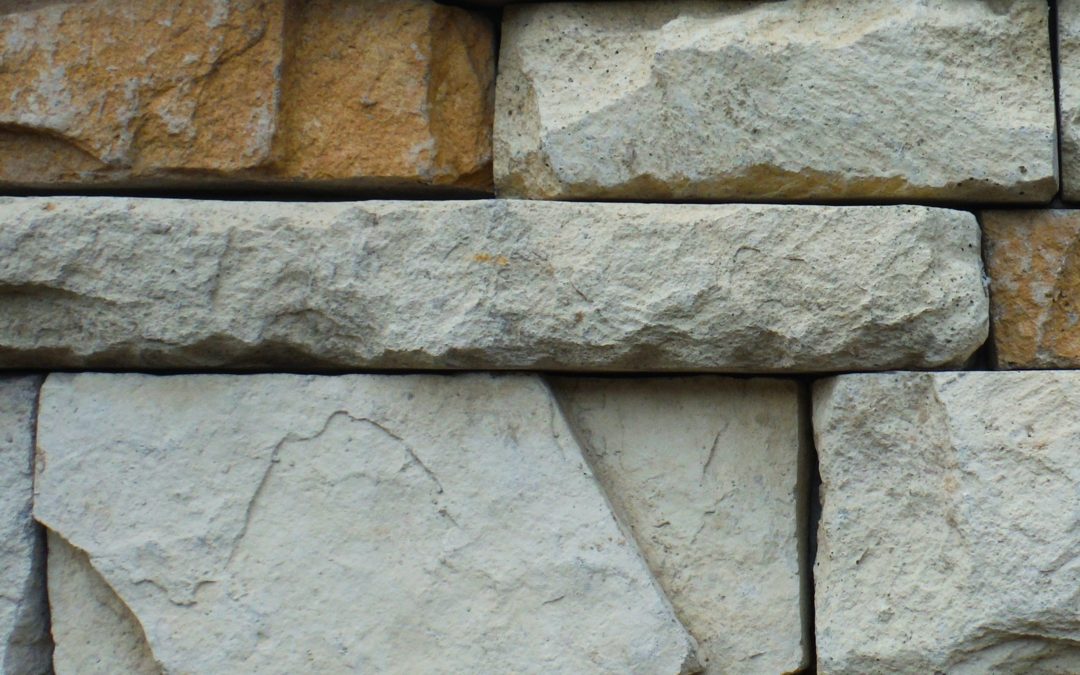Stone veneer facing is a popular choice for residential applications due to its realistic appearance and the variety of advantages it offers. This versatile product can be used for both indoor and outdoor projects and can add a touch of elegance and durability to any property. Whether you are looking to enhance the exterior of your home, add a fireplace, or create a unique outdoor living space, stone veneer is an excellent option to consider. In this blog, we will discuss the many advantages of using stone veneer in your next project. But first, what’s the difference between a stone veneer and a natural stone?
Faux Stone Veneers vs. Natural Stone Construction
When it comes to choosing between natural stone and faux stone veneers, it’s important to understand the key differences between the two.
Veneer stone, also known as architectural stone, manufactured stone, or Cultured Stone, is an engineered product that is designed to look like natural stone. It is made from a mixture of Portland cement, aggregates, and iron oxides that are baked in textured molds. While veneer stone can be a less expensive option, it is not as durable as natural stone, and its color may fade over time.
Natural stone, on the other hand, is 100% stone quarried straight from the earth with no added or removed materials and no color additives. Natural stone is often more durable and colorfast than veneer stone, but it is also heavier and more difficult to cut and source.
Another key difference is that veneer stone is not suitable for structural use, whereas natural stone can be used for building and construction. Additionally, veneer stone is typically thinner and lighter than natural stone and is available in a wider range of sizes and shapes.
When it comes to appearance and color fastness, natural stone tends to have a more popular appearance and is more durable than veneer stone. However, veneer stone can be a good option for those looking for a more budget-friendly option or for those who want a stone look in areas where natural stone would not be practical due to weight or structural limitations.
It’s important to keep in mind that proper installation is crucial for both types of stone, and if not done correctly, it can lead to costly repairs. It’s important to consult with a contractor before making a final decision and make sure they are experienced with the product you choose and that they understand the proper installation techniques and process.
The Main Advantages of Stone Veneers (Both Faux & Natural)
We’ve written about how to use stone veneer and the pros and cons of stone veneer before, but there’s always more to be said! So, here is our list of ten great advantages of stone veneer!
1. Stone Veneer Is Cost Effective
One of the main advantages of stone veneer is its cost savings compared to natural stone. Not only is natural stone more expensive, but the cost of shipping and handling is also significantly higher due to its weight. By choosing stone veneer, you can achieve the same look and feel of natural stone at a fraction of the cost, making it a cost-effective option for any budget.
2. Stone Veneer Can Be Installed Almost Anywhere
Stone veneer can be installed on various surfaces, including wood, cement, brick, and metal, making it a versatile building product. The installation process is relatively simple, and it can be done by an experienced contractor or even as a DIY project. This flexibility makes it a great option for both new construction and remodeling projects.
3. Flexible for Curved Surfaces
Installing natural stone on a curved surface is nearly impossible, but with faux or manufactured stone veneer, it can be done easily. The lightweight, flexible nature of faux stone veneer makes it an ideal option for covering curved surfaces, such as arches or columns, giving you a more natural and cohesive look.
4. Stone veneer Facing Is Easy To Care For
Stone veneer is relatively low maintenance and can be easily cleaned with standard cleaners. Unlike natural stone, it does not require any special products or techniques to maintain its beauty and durability. Additionally, it is less prone to staining and discoloration, making it a great option for high-traffic areas.
5. Stone Veneer Is Long Lasting
Stone veneer is made from hard and durable materials, making it a long-lasting and reliable product. When installed correctly, it can last for decades, providing a lasting investment return.
6. Stone Veneer Facing Can Transform Your Home
Installing stone veneer siding is a relatively easy way to completely transform the look and feel of your home! You’ll love seeing your home in a whole new light with the aesthetic transmutation of your home with standard siding into a modern castle. Not only is this cheaper, faster, and easier than building a new home out of stone, it gives up none of the advantages of modern insulation and comforts we take for granted. Real castles are drafty and not all they’re cracked up to be, and yet, your home can become the romantic ideal of a castle in just a few weeks.
7. Lighter Overall Weight
Due to its lightweight nature, stone veneer is far more flexible in terms of applications where it works well, and it’s easier to transport and install. The reduced weight and volume relative to project size also means saving on carbon emissions associated with transporting full-sized masonry stone.
8. Increased Design Flexibility
With the option of faux stone veneer, you can have virtually any color, texture, or pattern of stone veneer installed. While natural stone veneer is still limited by the natural colorations of stone available, your imagination can be set free by manufactured stone veneers.
9. Increased Energy Efficiency
Another benefit of using stone veneers is improved energy efficiency. Natural stone is a poor insulator, which can lead to higher energy costs in your home. Stone veneer, however, can improve your home’s insulation and lower your energy costs. Stone veneer facing also adds thermal mass, which can be a great boon when facing a fireplace, as it means more radiant heat once it’s up to temperature.
10. Stone Veneer Facing Is An Eco-Friendly Option
Between increased energy efficiency and the comparatively reduced environmental impact of manufactured stone veneer (and even natural stone veneer over full stone construction), it’s significantly more environmentally friendly to implement stone veneer on your property than it is to build entirely with stone.
What Does Getting Stone Veneer Installed Look Like?
Installing stone veneer is no easy feat – it requires the proper tools, expertise, and attention to detail to ensure a seamless finish. Before beginning, we’ll check to make sure the surface is compliant with local building codes and is free from structural failure or deterioration.
Next, a water-resistive barrier and foundation weep screed are installed to protect the main WRB from mortar adhesion and allow for any incidental water to drain properly. When it comes to the stone veneer itself, we need to cut and shape it to fit the desired surface, a time-consuming process that requires a skilled hand and specialized tools.
Throughout the installation process, we’ll take steps to minimize mess and dust by covering floors and furniture and cleaning up as we go. Once the stone veneer is installed, Stone Solutions will perform a final inspection to ensure the job has been done correctly and that all necessary steps have been taken to protect your property. With our help, you’ll be able to enjoy your beautiful new stone veneer for years to come!
Working With Stone Solutions Maine
If you’re looking for a stone veneer expert in Maine, look no further than Stone Solutions! With decades of experience and a substantial track record of excellence, we are the reliable masonry contractor you need for all your hardscaping and stone work. Contact us today to learn more about our current availability and the projects we can help with or to schedule your project.

